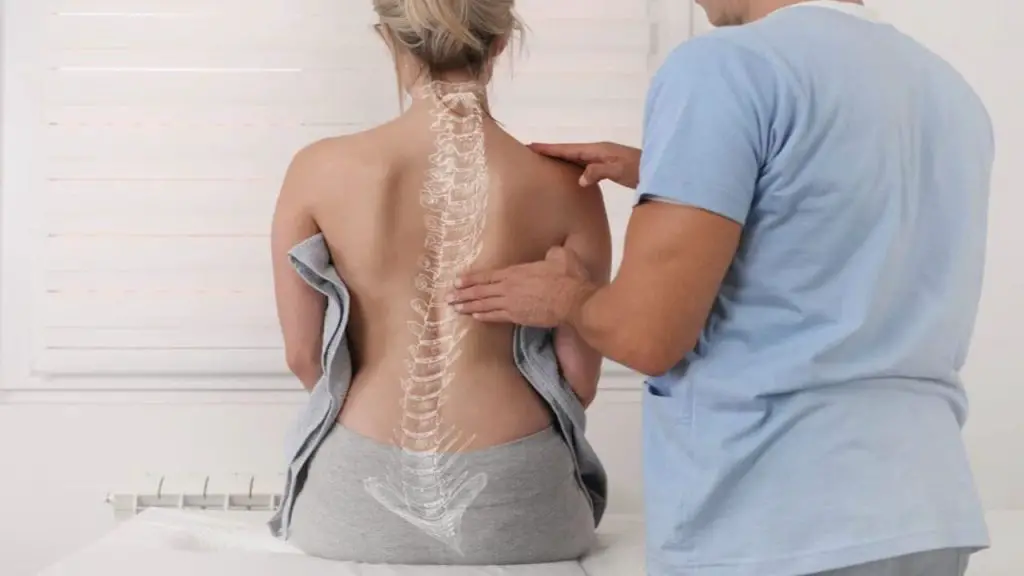Scoliosis is a condition that affects millions of people worldwide. It is a spinal disorder that can cause a range of symptoms, from mild discomfort to severe pain and disability. Many individuals with scoliosis wonder if their condition is severe enough to qualify for disability benefits.
The Social Security Administration (SSA) provides disability benefits to individuals who have a medical condition that prevents them from working. However, not all medical conditions are automatically eligible for disability benefits.
The severity of the condition and its impact on an individual’s ability to work is taken into consideration.
If you or someone you know has scoliosis and is considering applying for disability benefits, it’s important to understand the criteria used by the SSA to determine eligibility.
In this article, we’ll explore the severity of scoliosis needed to qualify for disability benefits and what you can do to increase your chances of being approved.
What Is Scoliosis?
Scoliosis is a medical condition that affects the spine, causing it to curve sideways. It can occur in people of all ages, but it is more common in children and adolescents.
The exact cause of scoliosis is unknown in most cases, but it is believed to be a combination of genetic and environmental factors. Symptoms of scoliosis can include uneven shoulders or hips, a visible curve in the spine, and back pain.
Treatment options vary depending on the severity of the condition, but they can include bracing, physical therapy, and in severe cases, surgery. Early detection and treatment of scoliosis can result in better outcomes and prevent further progression of the condition.
What Causes Scoliosis?

1. Idiopathic scoliosis
Idiopathic scoliosis is the most common form of scoliosis and accounts for around 80% of all cases. The exact cause of idiopathic scoliosis is unknown, but it is believed to be a combination of genetic and environmental factors.
2. Congenital scoliosis
Congenital scoliosis is caused by abnormal spinal development in the womb. It occurs when the vertebrae fail to form properly or fuse together, leading to a curvature of the spine.
3. Neuromuscular scoliosis
Neuromuscular scoliosis is caused by underlying neuromuscular conditions such as cerebral palsy, muscular dystrophy, or spinal cord injuries.
These conditions affect the muscles and nerves that control the spine, leading to abnormal curvature.
4. Degenerative scoliosis
Degenerative scoliosis is caused by the natural wear and tear of the spine that occurs with age. As the discs between the vertebrae deteriorate, the spine can develop a curvature.
5. Traumatic scoliosis
Traumatic scoliosis is caused by a spinal injury or trauma, such as a fracture or dislocation. This can cause the spine to twist or bend unnaturally, leading to scoliosis.
6. Syndromic scoliosis
Syndromic scoliosis is caused by underlying genetic syndromes such as Marfan syndrome or Down syndrome. These syndromes can affect the development of the spine, leading to scoliosis.
7. Postural scoliosis
Postural scoliosis is caused by poor posture or muscle imbalances. It is usually mild and can be corrected with physical therapy or exercise.
Symptoms of Scoliosis
1. Uneven Shoulders
One of the most common symptoms of scoliosis is uneven shoulders. This is when one shoulder appears to be higher than the other when looking at the person from behind.
2. Uneven Hips
Another symptom of scoliosis is uneven hips. This is when one hip appears to be higher than the other when looking at the person from behind.
3. Uneven Ribcage
Scoliosis can also cause the ribcage to appear uneven. This is when one side of the ribcage appears to be more prominent than the other when looking at the person from behind.
4. Back Pain
People with scoliosis may experience back pain, especially if the curvature of the spine is severe. The pain can be felt in the upper, middle, or lower back.
5. Fatigue
Scoliosis can cause fatigue because the body has to work harder to maintain balance and posture. This can lead to a feeling of tiredness, even after a good night’s sleep.
6. Breathing Problems
In severe cases of scoliosis, the curvature of the spine can affect the lungs, making it difficult to breathe. This can lead to shortness of breath, chest pain, and a decreased ability to exercise.
7. Digestive Issues
Scoliosis can also cause digestive issues because the curvature of the spine can put pressure on the stomach and intestines. This can lead to constipation, bloating, and other digestive problems.
8. Numbness or Tingling
In rare cases, scoliosis can cause numbness or tingling in the arms or legs. This is because the curvature of the spine can put pressure on the nerves that run through the spinal column.
9. Changes in Appearance
Scoliosis can cause changes in appearance, especially if the curvature of the spine is severe. This can lead to a hunched posture, a protruding ribcage, and other visible changes.
10. Emotional Distress
Living with scoliosis can be emotionally distressing, especially for young people who may feel self-conscious about their appearance. This can lead to anxiety, depression, and other mental health issues.
How Bad Does Scoliosis Have To Be To Get Disability?
1. Severity of the condition
The severity of scoliosis is one of the primary factors that determine whether a person is eligible for disability benefits. If the curvature of the spine is severe enough to affect daily activities and work, it may be considered a disability.
2. Functional limitations
Functional limitations are another important factor in determining disability eligibility. If scoliosis limits a person’s ability to sit, stand, walk, or perform other physical activities, it may qualify as a disability.
3. Age
Age is also a factor when it comes to scoliosis and disability. If scoliosis is diagnosed in early childhood, it may be more likely to qualify for disability benefits.
This is because the condition can affect growth and development, and may require ongoing medical treatment.
4. Treatment options
The type of treatment a person receives for scoliosis can also impact disability eligibility. If the condition is severe enough to require surgery or other invasive treatments, it may be considered a disability.
Additionally, if the treatment causes functional limitations or other complications, it may also qualify for disability benefits.
5. Medical documentation
To qualify for disability benefits, a person with scoliosis must provide medical documentation that supports their claim.
This may include X-rays, MRI scans, and other diagnostic tests, as well as medical records that document the severity of the condition and its impact on daily activities.
6. Work History
A person’s work history may also be considered when determining disability eligibility for scoliosis. If the condition has prevented them from working or has caused them to miss significant time from work, it may be considered a disability.
7. Social Security Administration guidelines
Ultimately, the decision to grant disability benefits for scoliosis is made by the Social Security Administration (SSA).
The SSA has specific guidelines for evaluating scoliosis and determining disability eligibility, which may vary depending on the severity of the condition and other factors.
Disability Benefits Of Scoliosis
1. Social Security Disability Benefits
Individuals with scoliosis may be eligible for Social Security Disability benefits if their condition is severe enough to prevent them from engaging in substantial gainful activity.
The Social Security Administration evaluates scoliosis on a case-by-case basis, taking into account the severity of the curvature, the age of the individual, and the impact on daily activities.
2. Workers’ Compensation Benefits
If scoliosis is caused or exacerbated by work-related activities, individuals may be eligible for workers’ compensation benefits. These benefits may include medical treatment, wage replacement, and vocational rehabilitation.
3. State Disability Benefits
Some states offer disability benefits for individuals who are unable to work due to a disability, including scoliosis. These benefits may include cash assistance, medical care, and vocational training.
4. Private Disability Insurance
Individuals with scoliosis may be able to obtain private disability insurance to provide financial support in the event they are unable to work due to their condition.
These policies may provide benefits for a limited time or until retirement age, depending on the terms of the policy.
5. Accommodations in the Workplace
Under the Americans with Disabilities Act, individuals with scoliosis may be entitled to reasonable accommodations in the workplace, such as ergonomic chairs or modified workstations, to help them perform their job duties.
6. Accessible Housing
Individuals with scoliosis may need accessible housing accommodations, such as wheelchair ramps or stairlifts, to help them navigate their home environment. Some states offer financial assistance programs for individuals who need these modifications.
7. Transportation Assistance
Individuals with scoliosis may need transportation assistance, such as a wheelchair-accessible vehicle or public transportation accommodations, to help them get to and from medical appointments or work.
Some states offer financial assistance programs for individuals who need these modifications.
Can A Person Live A Normal Life With Scoliosis?
Scoliosis is a condition characterized by an abnormal curvature of the spine. While it can be painful and debilitating in severe cases, many people with mild to moderate scoliosis are able to live normal lives with proper treatment and management.
Treatment may include physical therapy, bracing, and in some cases, surgery. With the right care, individuals with scoliosis can manage their condition and continue to participate in daily activities, sports, and hobbies.
It is important to work closely with a healthcare provider to develop a treatment plan that fits individual needs and goals.
Conclusion
In conclusion, the severity of scoliosis required to qualify for disability benefits varies depending on the individual’s specific situation and the guidelines set by the Social Security Administration.
While scoliosis alone may not be enough to qualify for disability, if it affects an individual’s ability to work and perform daily tasks, it may be considered a disabling condition.
It is important to consult with a healthcare professional and an experienced disability attorney to determine eligibility for disability benefits.


